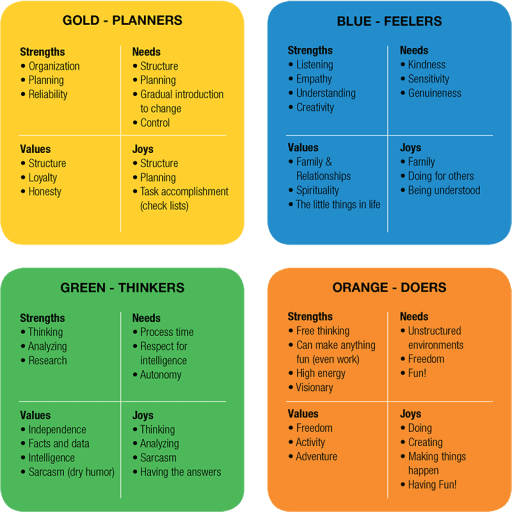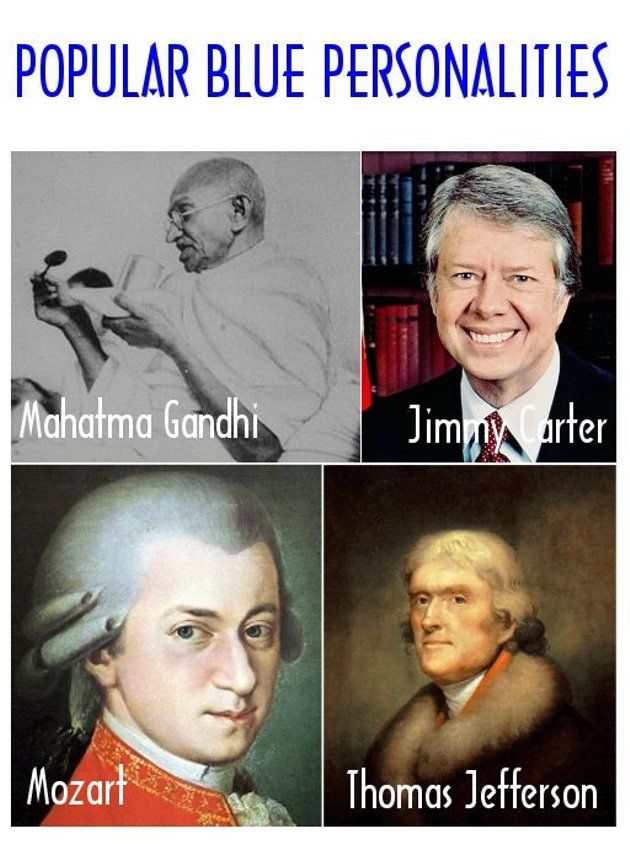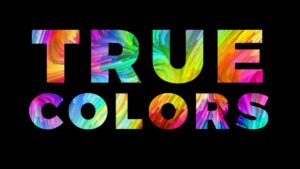What is the Blue True Colors Personality Type?
The Blue True Colors Personality Type is known as the Relationship-Oriented Personality Style.

- They are nurturers and natural romantics.
- Blues are sincere, sympathetic, and compassionate.
- They are personal, peaceful, communicative, flexible, and imaginative.
- Blues value integrity and unity in relationships.
- They need to contribute, encourage, and care.
As a primary blue, you may see yourself as warm and caring. Your friends might say you’re an active listener and a good friend.
You might also find yourself playing mediator when others aren’t getting along.
Blues often find satisfaction in helping others. A career in social work, nursing, or human resources could put your compassion and drive to use in a field that feels comfortable to you.
Blues may need to avoid burnout, as they could put others’ needs before theirs.
If you’re blue, you may try to avoid conflict and strive to keep the peace in your relationships.
You may envision harmony with the people around you and take rejection personally. While you enjoy socializing, you might draw strength from a core group of close friends and won’t tolerate false or dishonest behavior.
For those with a primarily blue result, you may see love as a complex and intimate expression.
You might appreciate minor gestures like a gift of flowers, a card, or candles.
Blues are often creative; you might express yourself through art, music, or writing.
Blue Personality Type cross-reference
- Keirsey Type – Idealist
- Temperament Type – Phlegmatic
- Animal Type – Otter
- DISC Type – Influential
- Socio-Communicative Type – Expressive
- Color Code – Blue
- Personality Compass – West
- Occupational Type – Artistic
MBTI Personality Types (xNFx) – Intuition and Feeling
Enneagram Types
- Type 1 – The Reformer (ENFJ, INFJ)
- Type 4 – The Individualist (INFJ, INFP)
- Type 7 – The Enthusiast (ENFP)
- Type 9 – The Peacemaker (INFP)
Blue Personality Type Careers
What are the True Color Personality Types?
Don Lowry developed the True Colors Four Personality Temperaments model in 1978 based on the Keirsey Temperament Sorter, which adapts the 16 Myers-Briggs Personality Types (MBTI) into Four Personality Temperaments.

However, Lowery, a student of David Kiersey, focused more on core motivation, intrinsic values, and communication styles among individuals in the workplace, family, school, and other social gatherings.
Each True Color, Gold, Blue, Green, and Orange, is associated with certain Personality Traits or behaviors and correlates with the four Keirsey MBTI Temperaments.
Lowery proposed that your True Colors is a developmental process that can be observed throughout an individual’s life.
The order and our first Colors are developed during the early phases of our lives, between six and twelve years of age. Our second Color is developing between twelve and twenty to support your first. Then, our third and fourth Colors are created later in our lives.
Personality Temperaments, Traits, and Types
Personality Temperaments, Traits, and Types are used in psychology to discuss a person’s Personality. Although often used interchangeably, the differences are worth understanding.
Personality is a collection of Emotions, Perceptions, and Actions that interact with each other and regulate themselves, shaping a dynamic system that forms a person’s “Behavioral Patterns.”
Many factors affect a person’s Personality, such as education, socialization, and other various pressures and aspects of life.
Personality Traits are observable characteristic patterns of Thoughts, Feelings, and Behaviors that are consistent and stable over time and across different situations throughout your life. Three criteria characterize Personality Traits: (1) consistency, (2) stability, and (3) individual differences.
For example, if you are talkative at home, you are also talkative at work. And if you were talkative as a child, you are still talkative as an adult.
Personality Temperaments are biological Traits that are partly inherited through your genes and partially determined by your brainstem. They don’t change throughout your life.
These “Natural Traits” are regarded as innate, inborn, and not learned. Your Personality Temperament is formed as an infant and never changes. It is also hard to modify, manipulate, or change because it is genetic. In some way or another, your inherited behavioral tendency will always be there.
A Personality Type identifies a specific collection of Traits, both learned and natural, comprising a broad, general classification. Personality Types involve qualitative differences between people, whereas Personality Traits are the quantitative differences between people.
The most crucial difference between Trait Theory and Type Theory is that Type Theory views people’s characteristics as discrete categories, while Trait Theory views these characteristics as a continuum.
For example, while a Type Theorist would claim that introverts and extraverts are two types of people, a Trait Theorist claims that extraversion is a gradient, and individuals can fall somewhere in the middle.
Your Temperaments and acquired Traits form your Personality, which can be Typed.
Blue Characteristics
- Optimistic.
- Accepting.
- Supportive.
- Caretaker.
- Enthusiastic.
- Passionate.
- True romantic.
- Peacemaker.
- Cooperative.
- Spiritual.
- People-oriented.
- Authenticity as a standard.
- Devotion to relationships.
- Self-searching.
- Sensitivity to subtlety.
- They make a difference in the world.
- They seek reality.
- They cultivate the potential of others.
- They write and speak with poetic flair.
- They have a life of significance.
- They seek harmony.
Blue Types Feel Authenticity is a Strength
If your brightest Color is Blue, you seek to express the inner you.
You value authenticity and honesty above all other characteristics.
- They are sensitive to subtlety, and—with great flair—they create roles in life’s drama.
- They enjoy close relationships with those they love and possess an intense spirituality.
- Making a difference in the world is easy because they cultivate the potential in themselves and others.
Blue Types Need to be Authentic
People in this group are valued when they are authentic.
- They must find their authentic self and live their lives as an expression of their unique identity.
- For them, integrity means the unity of their inner self with their outer face.
- Life is a dream in which they must find meaning.
- They are sensitive to subtlety and create roles—with a unique flair— in life’s drama.
- They enjoy close relationships with those they love and experience a spiritual pride in their nature.
- Making a difference in the world comes easily to them as they cultivate the potential in themselves and others.
- They are natural harmonizers symbolized by the vision of peace, the romance of love ballads, the drama of stage and screen, the importance of people, and the warmth of a hug or a handshake.
The Blue Type Continues to Search for Self
The Blue Personality involves an enigmatic and continual search for self.
Human relationships are of primary concern, not only on a one-to-one basis but among people collectively.
People in this group often behave with an almost chameleon ability to preserve relationships—even becoming what others want them to be to provide an atmosphere of harmony.
They explore and consume new directions, ideas, and concepts dealing with human relationships.
Blue Types Seeks Identity Through Contribution
The identity and self-esteem received from contributing to society are more important than any personal acknowledgment.
Despite receiving fewer rewards than other color groups, the “Blues” will continue to pursue goals they feel society neglects.
Blue on a bad day
- Fantasize / Day-Dream.
- Do Anything to Get Attention.
- Lie to Save Face.
- Withdraw so Others will Come / Feel Sorry for You.
- Cry/Pout.
- Show Passive Resistance.
- Yell/Scream.
- Fish for Compliments.
- Become Depressed.
- Say You Aren’t Liked.
- Feel Put Upon.
Blue Stressors
- Conflict.
- Isolation.
- Rejection.
- Negativity.
- They are being “used.”
- Apathy.
- Insincerity.
- Lack of acknowledgment or appreciation.
- They are not being genuine.
- Broken Promises.
- Negative Criticism.
- Lying.
Blue Frustrations
Things that Frustrate You…
- Lying.
- Violence.
- Personal Rejection.
- Lack of Communication.
- Lack of Close Friends.
- Sarcasm.
Things You Do That Frustrate Others…
- Lack of Planning.
- Being Passive.
- Avoiding Conflict.
- Suppressing Problems.
- Being Too Generous.
- Being Overly Sentimental.
Blue Relationships
People in the Blue group relate best to others on a personal level.
This leads them into “helping” professions and activities such as counseling, teaching, social work, and benevolent volunteer work.
Work is treated almost in a missionary sense, emphasizing the benefits derived rather than the job itself.
More time than any other color group is devoted to developing this personal aspect because they seek the same fulfillment for “self” as they attempt to give to others.
- They seek harmonious relationships.
- They are truly romantic and believe in perfect love that lasts forever.
- They bring drama, warmth, and empathy to all relationships.
- They enjoy the symbols of romance, such as flowers, candlelight, and music, and cherish the small gestures of love.
Blue Childhood
- They were highly imaginative and found it challenging to fit into the structure of school life.
- They reacted with great sensitivity to discordance or rejection and sought recognition.
- They responded to encouragement rather than competition.
Blue Communication Styles
When the Blue Type is Communicating with Others
- Recognize if you are reading between the lines.
- Add “No” to your vocabulary.
- Speak up.
- It’s okay to be direct.
- Discern when you are rambling and know when to get to the point.
When Communicating with Blue Type
- Acknowledge them.
- Be personable.
- Listen for feelings (talk privately).
- Hear them out.
- Offer feedback.
- Limit sarcasm or teasing.
Blue Perception
How the Blue Type perceive themselves
- Warm.
- Romantic.
- Idealist.
- Willing to Work Tirelessly for What You Believe In.
- Affirming.
- Promoting Growth, Well-Being.
- Relates Current.
- Experiences to Past Experiences.
- Likes to Please People.
- Great Communicator.
- Compassionate.
- Spiritual.
- Unselfish.
- Empathetic.
- Caretaker.
- Sympathetic.
- Trusting.
- Caring.
- They are trusting and give the benefit of the doubt.
- Supportive.
- Genuinely interested in others.
How Others Perceive the Blue Type
- Stuck In / Lives in the Past.
- Overly Emotional.
- Bleeding Heart.
- Mushy.
- Hopelessly Naïve.
- Too Tender-Hearted.
- Easily Duped.
- Smothering.
- To Touchy-Feely.
- Pushover.
- Too Nice.
- Too Trusting.
- Groveling.
- Fawning.
- Soft.
- They talk too much.
- Too emotional.
- Over-committed.
- Smothering.
- Nosey.
Blue Work Traits
Blue employees feel best in an open, interactive atmosphere:
- They think they bring a personal touch to the organization and like those in charge to care about them.
- They appreciate the feedback. You thrive in humanistic, people-oriented environments.
- They are “turned off” when conflicts arise but flourish in an atmosphere of cooperation.
- It is essential to you that others value and respect your feelings.
- They strongly desire to influence others so they may lead more meaningful lives.
- They often work in the arts, communications, education, and the helping professions.
- They are adept at motivating and interacting with others.
- They value people and seek their full potential.
- Their commitment to people attaining the best in their work and personal lives generates loyalty.
- Co-workers often feel like an extension of your family.
- As an “applicator,” you work toward and react to the best in others.
- Having a gift for language, you are an enthusiastic spokesperson.
- As a catalyst, you are comfortable in an unstructured, democratic setting.
- Nurturing and supporting the growth of co-workers is fulfilling to you.
- They thrive on being a part of the development of your co-workers’ social and organizational awareness.
- Their compassion for others makes it a joy to work with people.
- They lead best by creating a rapport with people.
- They feel good when co-workers learn and grow from their experiences and activities.
- They go out of their way to involve co-workers in the decision-making process.
- Their concept of success emphasizes self-actualization, harmony, personal relationships, authenticity, cooperation, and uniqueness.
Blue Type Leadership Style
- Expect others to express their views.
- Assumes “family spirit.”
- Works to develop others’ potential.
- Individuals oriented.
- Democratic, unstructured approach.
- Encourages change VIA human potential.
- Change time allows for a sense of security.
- Expects people to develop their potential.
Blue likes to receive praise.
- When they are unique, and their contributions are recognized.
- When their achievements are recognized.
- When their meaningful characteristics are identified.
- When they know they have importance and significance to the group’s well-being.
- When they have been praised energetically and enthusiastically.


